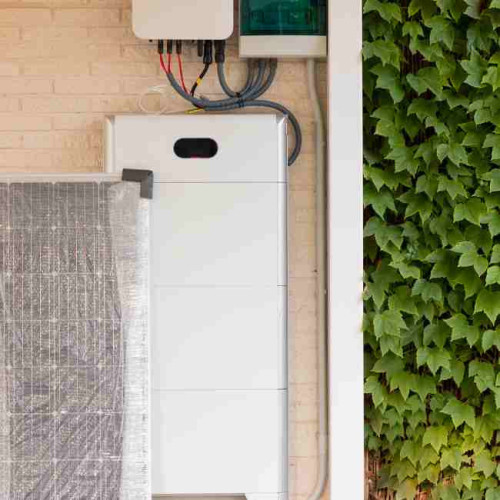- 05 Oct, 2017
- Solar Training , Products , Self-consumption , Using and installation

Choosing the solar battery is an important step in every project with a solar installation in an isolated site off the power grid or with a hybrid system. The batteries must fit the use you want to make of your electricity. Otherwise, their service life will be limited and you will have to invest more money in getting new ones. Also, the output of your solar installation could be lowered if you use the wrong batteries. Clearly, the topic is of importance. So read all about it in this article!
Calculating your solar batteries' capacity
Knowing the necessary capacity of your battery fleet will allow you to determine the number of batteries required and their characteristics. To do this, you will first have to take into account the amount of energy you will have to store after a normal production day. You will then have to take into account the number of days without optimal sunlight, in order to know the amount of energy to store over a year. In the calculation, the operating voltage of the solar system must also be taken into account, as well as the maximum discharge depth. To summarize your calculation will look like this:
C: Total battery capacity in amperes per hour
N: The number of days with insufficient sunlight. In France, it takes about 5 days of battery reserve time
D: The daily energy demand expressed in Watt-Hour/day (To obtain it, simply multiply the power of each of your devices by its daily operating time and add these results)
U: The battery's voltage
L: maximum discharge depth
C = (DxN)/(LxU)
On the batteries, the capacity is indicated with the symbol C.
Selection criteria
Now that you know how to calculate the capacity that your fleet will need, here are the other criteria to which you should pay attention when choosing your batteries:
Number of discharge cycles and capacity: solar batteries are destined to experience a large number of charge/discharge cycles since they supply your electrical appliances when your solar installation is no longer able to do so, which happens regularly (at night, during bad weather). It is therefore necessary to be attentive to the number of cycles that your batteries can withstand as well as to the discharge capacity: indeed, the batteries can discharge over 80% in the event of a prolonged period without sunlight. Also, it is better to favour batteries that can withstand more than 300 cycles, and a large discharge.
Good charge efficiency and charge acceptance: solar electricity is valuable, to avoid wasting it, it is better to select batteries with good charge efficiency and charge acceptance.
The lowest possible self-charge: always in order to avoid wasting your energy.
Maintenance: most of the batteries do not require maintenance, as they are equipped with VRLA technology (equipped with a safety valve that allows the release of pressure in the event of overcharging) and do not require the addition of liquid. Some open lead-acid batteries, on the other hand, require regular liquid leveling, a rather perilous operation.
The different battery types
Liquid open batteries: cheaper, but require regular maintenance (addition of water) which can lead to the risk of acid burns.
Sealed batteries: Sealed batteries avoid this type of maintenance. They are also more recommended under certain conditions, especially if the batteries are stored in a room with little or no ventilation, and/or there is a risk of freezing. There are two different types:
AGM batteries: due to their low internal resistance, they can withstand high charging and discharging speeds. They have a relatively long life span.
Gel batteries: they do not support high charging and discharging speeds due to high internal resistance. On the other hand, they are suitable for deep discharges.
Li-Ion batteries: new generation of batteries, they offer promising performance, including low self-charge.











